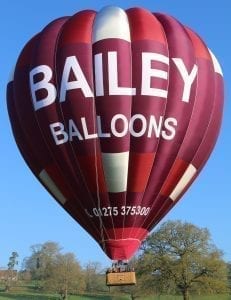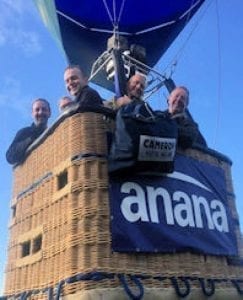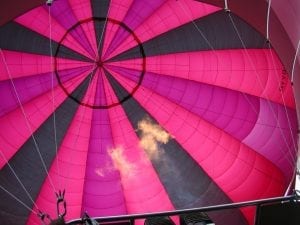Some quick and simple facts about ballooning!

In Paris, France, the Montgolfier brothers built the first balloon made out of paper and light material in June 1783.
A sheep, a duck and a rooster were the first air to travel by hot air balloon
Hot air rises because it is less dense than colder air which means the envelope (the balloon bit) rises.
Balloons mostly use propane, the same as used in BBQs, but sometimes they use butane in hot countries.
The direction of a hot air balloons is determined by the wind direction. Balloon pilots can, however, change direction by

ascending or descending to pick up varying wind directions at different heights. Clive Bailey is known for his amazing abilities to land in a field he has picked from miles away!
You can fly in any season but in the UK due to the wet and windy conditions over the Winter, we tend to fly from March to the end of October. Balloons need stable weather with good visibility, no rain and light winds. We normally meet after sunrise and about 2-3 hours before sunset when the winds are at their calmest. Flying mid-day in the Summer is risky because of stronger winds and turbulence.
A hot air balloon is made up of three main parts- 1. The envelope: the fabric balloon is made of a specially designed material that holds the air. 2. The burner: the unit that propels the heat in the envelope. 3. The basket: where the pilot and passengers stand
A burner can put out 10-20 million BTUs at temperatures over 1000F or 537.8 Celsius. Your home heating boiler puts out about 50,000 BTUs.

Most baskets are made of hand-woven wicker which will absorb shock from a hard landing.
Balloon Flights with passengers can cover up to 3-20 miles, however the distance a balloon can fly depends on fuel, wind speeds and available landing sites. Balloons can also been flown for long distances when the fuel, weight and weather etc is right.
Balloons can climb over 10,000 feet above sea level before pilots and passengers would then require oxygen. Most flights occur within 2000 feet of the ground.
Most accessible open areas, such as parks, school grounds, fields or even in a very large back garden! No airport is required!